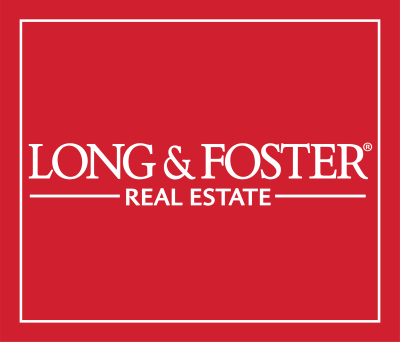The time for home ownership has come. You’ve patiently waited and now you’re tired of paying someone else’s mortgage with your rent. There’s only one problem though – coming up with a 20% down payment.
Now what?
Thankfully, there is a solution: Private Mortgage Insurance, or PMI. Whether you don’t have the money to put down the full 20% or if you’d just prefer to have more cash in hand for remodeling or repairs, PMI could be the answer to your mortgage questions. Learn the basics with this article on PMI 101.

What is private mortgage insurance (PMI)?
PMI protects the lender’s investment in the home. It’s generally necessary because when a borrower makes a down payment of less than 20% of the property’s value, making the mortgage’s loan-to-value (LTV) ratio over 80%. Lenders can make this a requirement because of the increased risk profile associated with a higher LTV ratio.
PMI isn’t without cost though. Borrowers will have to pay their PMI until they’ve got enough equity in their home that the loan is no longer considered high risk – when the loan is less than 80% of the original purchase price.
It’s also important to keep in mind that mortgage insurance works differently if you get a government backed loan. More about that later though.
How much does PMI cost?
It depends. On average, they cost between .25% and 2% of the loan balance per year. Factors like the size of the down payment, the loan term, and the borrower’s credit score can impact the cost. Put simply, the riskier your mortgage is for a lender, the higher the cost of PMI.
Wondering what it would cost in your scenario? As your lender will select your insurer, the best you can do ahead of time is get an idea of what you’ll pay. To find out this number, study the mortgage insurance rate put out by a potential provider. Some examples of providers include Radian, Essent, Genworth, and MGIC.
What are some different types of PMI?
Depending on your scenario, there are several different kinds of PMI. Your lender and your realtor can help you to decide which one is right for you.
Borrower-Paid Mortgage Insurance (BPMI)
The most common form of PMI, this is added on as an additional monthly fee that you pay alongside your mortgage. Once your loan closes, you pay it every month until you have 22% equity in your home based on the original purchase price. Then, the lender cancels the BPMI (assuming that you’re current on your payments).
Sometimes you can get BPMI cancelled if you have enough appreciation in your home. Refinancing can also be a way to get out of BPMI faster, but the cost of refinancing may make it not worth it. A faster way to minimize the time spent paying BPMI is to prepay your mortgage principal so you reach that 22% of equity faster.
Single-Premium Mortgage Insurance (SPMI)
Also called single-payment mortgage insurance, this is when you pay your PMI upfront in a lump sum. The biggest benefit associated with this strategy is that it’ll give you a lower monthly payment compared to BPMI, helping you to qualify for a bigger loan. It also means that you don’t have to worry about refinancing or paying attention to your LTV ratio to see when you can cancel your PMI.
However, no portion of this premium is refundable. So if you sell within a few years, you’re out of luck. Sometimes you can negotiate it as part of the transaction though. There’s also a chance you may not have the funds to pay this PMI all at once ahead of time.
Lender-Paid Mortgage Insurance (LPMI)
Don’t let the name fool you, this doesn’t mean your lender is paying your PMI. How it works is they pay the premium, but in return you pay a slightly higher interest rate throughout the life of your loan. Because of this, you can’t cancel this type of PMI even if you’ve built up sufficient equity in your home. Instead, you’ll have to refinance.
Why would you go this route? Because even though your interest rate would be slightly higher, your monthly payment could still be lower. This would make it possible for you to qualify for a bigger loan.
Split-Premium Mortgage Insurance
This type of PMI is a combination of BPMI and SPMI. It works by having the borrower pay a portion at closing and the remainder as a monthly payment. This means that you wouldn’t have to come up with as much extra cash up front as with SPMI or increase your monthly payment as much as BPMI.
This can be a good option if you have a high debt-to-income ratio and increasing your monthly payment too much would mean you’d no longer qualify for the loan. You can also roll the initial premium into your mortgage or ask the seller to pay it as part of your contract.
Federal Home Loan Mortgage Protection (MIP)
As promised, let’s return to what happens if you get an FHA loan. PMI though the FHA is known as MIP and it’s required if a down payment is 10% or less. You can only get MIP if you get an FHA loan.
It requires an upfront payment and also monthly premiums. In most cases, MIP lasts the duration of the loan, requiring that you refinance it to get it fully removed. However, if you put down over 10%, you can expect to remove it from your loan after 11 years.
You can learn more about how MIP is calculated and what to expect here.
Final thoughts
Though PMI can be an additional expense, the value you can gain by being able to purchase a new home faster can often outweigh it. This is especially true if you can cancel it after reaching a certain degree of equity. Wondering what else you can do to get prepared for a mortgage? Check out my guide on what to do before you apply for a mortgage.
Got questions about finding and financing your next home? I’m licensed in DC, MD, VA, and WV, and have a network of lenders in each state ready to help. Contact me directly at sian@sianpugh.com to get started.


Leave a Reply